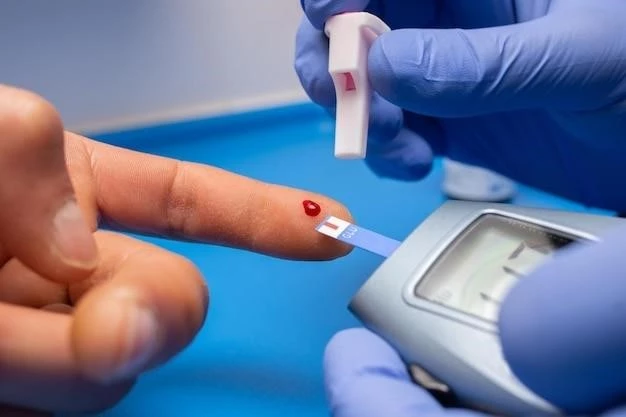Introduction to Vasopressin-resistant Diabetes Insipidus
Arginine vasopressin resistance (previously known as nephrogenic diabetes insipidus) results from partial or complete resistance of the kidney to the effects of antidiuretic hormone (AVP).
Vasopressin-resistant diabetes insipidus, also known as nephrogenic diabetes insipidus, is a condition characterized by the kidney’s resistance to the effects of antidiuretic hormone (ADH), leading to the inability to concentrate urine adequately. This resistance can be partial or complete, resulting in excessive urination (polyuria) and increased thirst (polydipsia). The condition may be acquired or genetically inherited, impacting the body’s water balance and posing challenges in maintaining fluid levels.
Definition and Overview
Vasopressin-resistant diabetes insipidus, also known as nephrogenic diabetes insipidus, is a condition where the kidneys are unable to respond to the antidiuretic hormone effectively, leading to excessive urination and increased thirst. This resistance can be due to various factors, either acquired or genetic, affecting the body’s water regulation system.
Central Diabetes Insipidus
Central diabetes insipidus, caused by a deficiency of arginine vasopressin (AVP) due to hypothalamic-pituitary disorders, leads to the development of polyuria and polydipsia. Diagnosis involves the assessment of urinary concentrating ability and responses to exogenous AVP to differentiate from other forms of diabetes insipidus.
Symptoms and Diagnosis
Common symptoms of central diabetes insipidus include excessive urination (polyuria), intense thirst (polydipsia), and potentially nocturia. Diagnosis involves evaluating urinary concentration through various tests, including the water deprivation test and assessing responses to exogenous vasopressin to confirm the condition.
Diabetes Insipidus⁚ Causes and Prevalence
Vasopressin-resistant diabetes insipidus can be attributed to genetic or acquired factors affecting the synthesis, regulation, or action of antidiuretic hormone, impacting fluid balance.
Genetic vs. Acquired Causes
Vasopressin-resistant diabetes insipidus can be caused by genetic factors, where mutations affect antidiuretic hormone synthesis, or acquired conditions arising from kidney dysfunction that impairs the response to the hormone, impacting water regulation.
Prevalence Statistics
The prevalence of vasopressin-resistant diabetes insipidus, attributed to various causes affecting antidiuretic hormone regulation and kidney function, is estimated to affect approximately 1 in 25,000 individuals. The condition can have genetic or acquired origins, with the majority of cases being acquired. Females and males are equally affected by this disorder, contrasting with other forms that may exhibit different gender distributions.

Nephrogenic Diabetes Insipidus
Nephrogenic diabetes insipidus, now termed arginine vasopressin resistance, primarily stems from kidney pathology, leading to the inability of the kidneys to appropriately respond to antidiuretic hormone, affecting water balance.
Pathophysiology and Kidney Involvement
In nephrogenic diabetes insipidus, now referred to as arginine vasopressin resistance, the condition primarily involves kidney pathology, where the kidneys exhibit resistance to the effects of antidiuretic hormone, leading to impaired water reabsorption and dilute urine production. This resistance can be partial or complete, impacting the body’s ability to maintain water balance.
Differentiation from Central DI
In the context of diabetes insipidus, differentiating nephrogenic diabetes insipidus (vasopressin-resistant) from central diabetes insipidus is crucial. While central diabetes insipidus results from a deficiency of arginine vasopressin due to hypothalamic-pituitary disorders, nephrogenic diabetes insipidus mainly stems from kidney pathology, leading to resistance to the effects of antidiuretic hormone, impacting the body’s ability to regulate water balance.
Clinical Features of Vasopressin-resistant Diabetes Insipidus
Vasopressin-resistant diabetes insipidus is characterized by excessive dilute urine production (polyuria) and increased thirst (polydipsia). These symptoms stem from the kidneys’ inability to respond effectively to antidiuretic hormone, impacting fluid balance.
Polyuria and Polydipsia
The hallmark clinical manifestations of vasopressin-resistant diabetes insipidus include excessive urination (polyuria) and increased thirst (polydipsia). These symptoms stem from the kidneys’ inability to respond effectively to antidiuretic hormone, leading to the excretion of large volumes of dilute urine and the resulting compensatory thirst.
Complications and Associated Symptoms
Vasopressin-resistant diabetes insipidus can lead to complications such as dehydration due to excessive fluid loss, electrolyte imbalances, and potential impacts on kidney function. Associated symptoms may include fatigue, weakness, and in severe cases, neurological symptoms that require prompt medical attention to maintain proper fluid and electrolyte balance.
Diagnosis and Diagnostic Tests
In diagnosing vasopressin-resistant diabetes insipidus, healthcare providers may utilize the water deprivation test to assess the kidney’s response to antidiuretic hormone. Additionally, measuring vasopressin levels and evaluating the response to exogenous vasopressin play a crucial role in confirming the condition.
Water Deprivation Test
In diagnosing vasopressin-resistant diabetes insipidus, healthcare providers commonly employ the water deprivation test. This test evaluates the kidney’s response to antidiuretic hormone and helps differentiate between various forms of diabetes insipidus. By monitoring urine concentration and the body’s response to water restriction, clinicians can determine the kidney’s ability to concentrate urine effectively, aiding in the diagnosis of vasopressin-resistant diabetes insipidus.
Vasopressin Levels and Response Assessment
In diagnosing vasopressin-resistant diabetes insipidus, assessing vasopressin levels and the body’s response to exogenous vasopressin is crucial. Monitoring vasopressin levels and observing how the body reacts to supplemental vasopressin aids in distinguishing this condition from other forms of diabetes insipidus, confirming the resistance of the kidneys to the hormone’s effects.

Treatment Approaches for Vasopressin-resistant DI
Treatment for vasopressin-resistant diabetes insipidus focuses on managing symptoms, including polyuria and polydipsia. Desmopressin, a synthetic version of vasopressin, may be utilized to help regulate fluid balance.
Management of Symptoms
In the management of vasopressin-resistant diabetes insipidus, the focus is on alleviating symptoms such as excessive urination and thirst. One common approach involves using desmopressin, a synthetic form of vasopressin, to help regulate fluid balance and reduce the impact of polyuria and polydipsia.
Role of Desmopressin in Treatment
Desmopressin, a synthetic form of vasopressin (antidiuretic hormone), plays a critical role in treating vasopressin-resistant diabetes insipidus. By administering desmopressin, clinicians aim to help regulate fluid balance and mitigate the symptoms of polyuria and polydipsia associated with the condition.
Research and Advancements in Understanding Vasopressin Resistance
Research into vasopressin resistance in diabetes insipidus has led to a better understanding of kidney dysfunction and hormone responses. Recent studies aim to uncover mechanisms causing resistance and explore potential treatment advancements for managing this challenging condition;
Recent Studies and Findings
Recent studies on vasopressin resistance in diabetes insipidus have focused on understanding kidney dysfunction and hormonal responses. These studies aim to uncover the mechanisms underlying resistance, leading to potential advancements in the treatment and management of this challenging condition.
Future Perspectives in Treatment
Looking ahead, the future perspectives in the treatment of vasopressin-resistant diabetes insipidus are optimistic, with ongoing research focusing on identifying novel therapeutic targets and improving management strategies. Advancements in understanding the mechanisms of vasopressin resistance may pave the way for innovative treatment modalities to enhance patient outcomes and quality of life.
